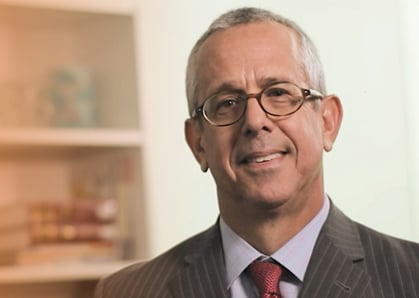Q&A With Bilzin Sumberg's Howard Nelson
Howard Nelson, chairman of the environmental practice group at Bilzin Sumberg Baena Price & Axelrod LLP, has experience in environmental and land use law and zoning and regional planning. He represents clients throughout all phases of the development process from site location through permitting and construction, as well as in permit appeals and environmental enforcement matters.
Q: What is the most challenging case you have worked on and what made it challenging?
A: As a field, the most challenging cases I’ve ever worked on have been environmental inverse condemnation cases. Together with my partners, I have been fortunate to work on three large high-profile environmental inverse condemnation cases over the last 10 years.
The first one, City National Bank v. South Florida Water Management District, involved 1,200 acres in the Pennsuco wetlands mitigation area in northern Miami-Dade County. The second case, Developers of Coral Bay v. Trustees of the Internal Improvement Fund, involved 18 zoned platted lots lying approximately 4 to 6 feet below the water within the Biscayne Bay Aquatic Preserve. The third case, Cutler Properties v. South Florida Water Management District, involved an approximately 140-acre residential project located in the footprint of the Biscayne Bay coastal wetlands element of the comprehensive everglades restoration plan.
While all three of these cases were challenging, I believe the Coral Bay case was, quite possibly, the most challenging. These lots were part of a larger conveyance of sovereign submerged land which had been platted and mostly developed 50 years prior to our case. The 18 lots involved in our case were some of the last remaining lots from a larger subdivision. Because of certain economic constraints faced by one of the prior owners of the property, these lots were never filled, although each paid ad valorem property taxes and special assessments for improvements within the subdivision.
The original development of the property had been embroiled in litigation (Askew v. Gables by the Sea) and led to the adoption of the Biscayne Bay Aquatic Preserve Act. What made this case particularly challenging were the myriad of conflicting and competing permitting concerns related to local zoning codes, Florida Department of Environmental Protection regulations and the restrictions placed within the Biscayne Bay Aquatic Preserve Act.
The case was ultimately settled (as were the two other cases), and the property was turned over to public ownership with just compensation being paid for the taking.
Q: What aspects of your practice area are in need of reform and why?
A: One of the areas in most need of reform is the methodology and regulatory procedure for determining when properties are contaminated and the pathway for bringing contaminated properties to a fruitful end use. Many of the state and local regulations concerning contaminated soil and groundwater ignore ambient background contamination in soil or require property owners or developers to go through arduous and complex analyses to determine that levels of perceived contamination are normal background or anthropogenic background concentrations.
In order for both land development and contamination remediation decisions to be undertaken in a timely manner and to provide an incentive for property owners to undertake them more readily, a streamlined approach for determining the developability of contaminated property needs to be perfected.
Q: What is an important issue or case relevant to your practice area and why?
A: Lost Tree Village Corporation v. United States is a very important case. Lost Tree starts the redefinition, in takings cases, for what constitutes a “single parcel” and, therefore, what constitutes the definition of a parcel of land for the purposes of takings or inverse condemnation law.
Q: Outside your own firm, name an attorney in your field who has impressed you and explain why.
A: Michael R. Goldstein, of the Goldstein Environmental Law Firm, is one of the practitioners in my field who impresses me the most. Michael has become the clearest proponent for brownfields developments that I know and is a constant speaker, advocate and marketer for the enlargement of brownfields redevelopment.
Q: What is a mistake you made early in your career and what did you learn from it?
A: Early in my career, I made the mistake of not returning a call quickly enough to a client. I learned very quickly that no matter how busy you are, returning phone calls is not something to be deferred. It’s an integral part of building strong relationships with clients.
This article is reprinted with permission from Law360
